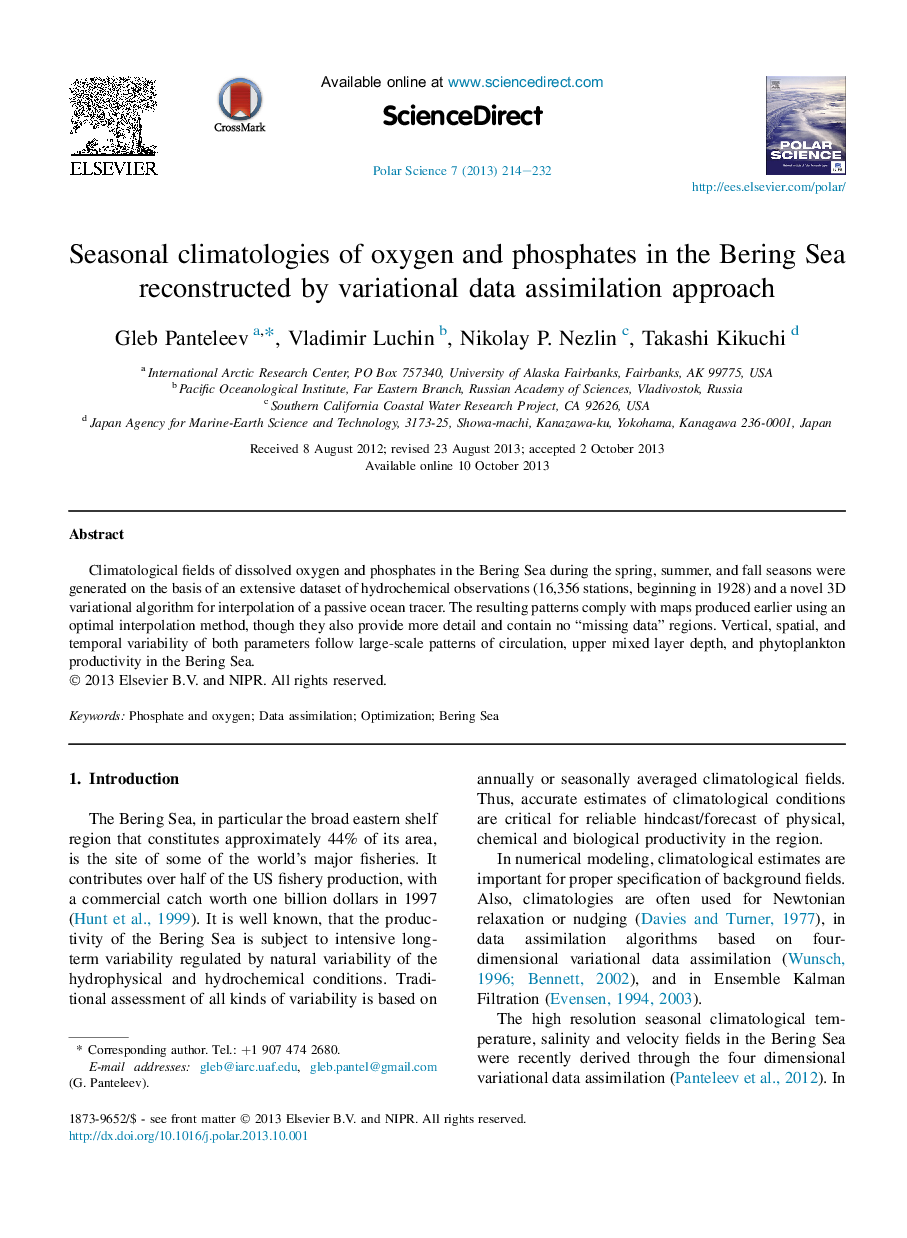| Article ID | Journal | Published Year | Pages | File Type |
|---|---|---|---|---|
| 4683214 | Polar Science | 2013 | 19 Pages |
Abstract
Climatological fields of dissolved oxygen and phosphates in the Bering Sea during the spring, summer, and fall seasons were generated on the basis of an extensive dataset of hydrochemical observations (16,356 stations, beginning in 1928) and a novel 3D variational algorithm for interpolation of a passive ocean tracer. The resulting patterns comply with maps produced earlier using an optimal interpolation method, though they also provide more detail and contain no “missing data” regions. Vertical, spatial, and temporal variability of both parameters follow large-scale patterns of circulation, upper mixed layer depth, and phytoplankton productivity in the Bering Sea.
Related Topics
Physical Sciences and Engineering
Earth and Planetary Sciences
Earth and Planetary Sciences (General)
Authors
Gleb Panteleev, Vladimir Luchin, Nikolay P. Nezlin, Takashi Kikuchi,
